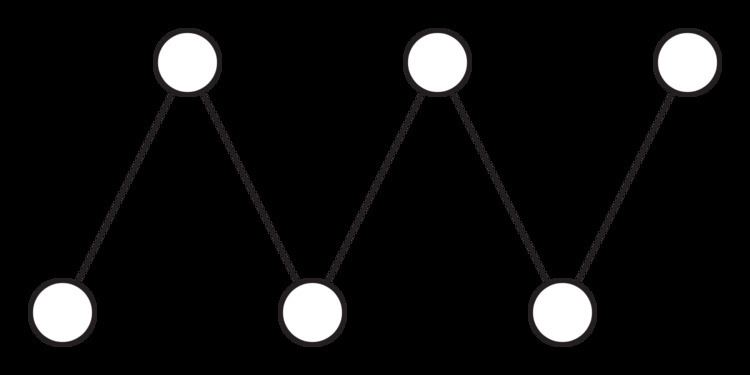 | ||
In mathematics, especially in order theory, a maximal element of a subset S of some partially ordered set (poset) is an element of S that is not smaller than any other element in S. A minimal element of a subset S of some partially ordered set is defined dually as an element of S that is not greater than any other element in S.
Contents
- Definition
- Existence and uniqueness
- Maximal elements and the greatest element
- Directed sets
- Examples
- Consumer theory
- Related notions
- References
The notions of maximal and minimal elements are weaker than those of greatest element and least element which are also known, respectively, as maximum and minimum. The maximum of a subset S of a partially ordered set is an element of S which is greater than or equal to any other element of S, and the minimum of S is again defined dually. While a partially ordered set can have at most one each maximum and minimum it may have multiple maximal and minimal elements. For totally ordered sets, the notions of maximal element and maximum coincide, and the notions of minimal element and minimum coincide.
As an example, in the collection
S = {{d, o}, {d, o, g}, {g, o, a, d}, {o, a, f}}ordered by containment, the element {d, o} is minimal, the element {g, o, a, d} is maximal, the element {d, o, g} is neither, and the element {o, a, f} is both minimal and maximal. By contrast, neither a maximum nor a minimum exists for S.
Zorn's lemma states that every partially ordered set for which every totally ordered subset has an upper bound contains at least one maximal element. This lemma is equivalent to the well-ordering theorem and the axiom of choice and implies major results in other mathematical areas like the Hahn–Banach theorem and Tychonoff's theorem, the existence of a Hamel basis for every vector space, and the existence of an algebraic closure for every field.
Definition
Let
for all
The definition for minimal elements is obtained by using ≥ instead of ≤.
Existence and uniqueness
Maximal elements need not exist.
Example 1: Let S = [1,∞) ⊂ ℝ, for all m∈S we have s=m+1∈S but m<s (that is, m≤s but not m=s). Example 2: Let S = {s∈ℚ: 1≤s2≤2} ⊂ ℚ and recall thatIn general ≤ is only a partial order on S. If m is a maximal element and s∈S, it remains the possibility that neither s≤m nor m≤s. This leaves open the possibility that there are many maximal elements.
Example 3: In the fence a1 < b1 > a2 < b2 > a3 < b3 > ..., all the ai are minimal, and all the bi are maximal, see picture. Example 4: Let A be a set with at least two elements and let S={{a}: a∈A} be the subset of the power set P(A) consisting of singletons, partially ordered by ⊂. This is the discrete poset—no two elements are comparable—and thus every element {a}∈S is maximal (and minimal) and for any distinct a‘,a‘‘ neither {a‘} ⊂ {a‘‘} nor {a‘‘} ⊂ {a‘}.Maximal elements and the greatest element
It looks like
The converse is not true: there can be maximal elements despite there being no maximum. Example 3 is an instance of existence of many maximal elements and no maximum. The reason is, again, that in general
If there are many maximal elements, they are in some contexts called a frontier, as in the Pareto frontier.
Of course, when the restriction of
Finally, let us remark that
Directed sets
In a totally ordered set, the terms maximal element and greatest element coincide, which is why both terms are used interchangeably in fields like analysis where only total orders are considered. This observation applies not only to totally ordered subsets of any poset, but also to their order theoretic generalization via directed sets. In a directed set, every pair of elements (particularly pairs of incomparable elements) has a common upper bound within the set. Any maximal element of such a subset will be unique (unlike in a poset). Furthermore, this unique maximal element will also be the greatest element.
Similar conclusions are true for minimal elements.
Further introductory information is found in the article on order theory.
Examples
Consumer theory
In economics, one may relax the axiom of antisymmetry, using preorders (generally total preorders) instead of partial orders; the notion analogous to maximal element is very similar, but different terminology is used, as detailed below.
In consumer theory the consumption space is some set
and it is interpreted as a consumption bundle that is not dominated by any other bundle in the sense that
It should be remarked that the formal definition looks very much like that of a greatest element for an ordered set. However, when
An obvious application is to the definition of demand correspondence. Let
The demand correspondence maps any price
It is called demand correspondence because the theory predicts that for
Related notions
A subset
A subset
